It was Thursday, May 18, 2017. Dark was falling and a storm was in the air. My husband John and I, along with our good friend Taylor, were traveling south along Tennessee Highway 352, back to our home in Flag Pond from Johnson City, where we had been to a Southern Appalachian Highlands Conservancy fundraiser. Though it had been a long week and we were all tired, we were deep in conversation about the most important topic on our collective mind: our backyard, Rocky Fork.
The 10,000-acre Rocky Fork watershed—roughly a fifth of which recently became Tennessee’s newest state park, the rest remaining part of Cherokee National Forest—has been inventoried and studied by scientists as a biodiversity hotspot for the Appalachians. Its cove forest and pristine mountain streams are home to Peregrine Falcons, the Yonahlossee salamander, the woodland jumping mouse, and delicate pink and yellow lady slipper orchids. The property is also part of the Unicoi Bear Sanctuary and lies within an Audubon Important Bird Area.
Taylor, John and I were talking about the fact that, although the tract was spared from being purchased by trophy-home developers a decade ago, it might now face another threat just as damaging to its fragile ecosystem. The park, which currently has no facilities and only limited parking, is accessed via a narrow one-lane paved road, tightly wedged between the gorgeous Rocky Fork Creek on one side and steep-sloping rocky embankments on the other. We were soon to pass this road en route to our house. Rumor had it that this enchanting corridor that led into our favorite slice of Appalachian Heaven on Earth might soon be widened to support the passage of huge RVs and that a large campground with all the amenities might be built there to accommodate up to 60 of them.
“Let’s go up in Rocky Fork for a minute,” Taylor suddenly suggested when we were about a mile from the turn. “I think the habitat could be perfect up there for Blue Ghost Fireflies.”
Not putting much stock in the possibility—and quite honestly not really knowing there were different kinds of lighting bugs to be found—I conceded. John, who had seen the creatures a few times on the Appalachian Trail, was intrigued. Taylor described Phausis reticulata and told us what to look for. We drove in a little ways on what John and I refer to as “the prettiest mile of road in Tennessee,” until Taylor said, “Okay, stop here, and turn off all the lights.” We complied and, in a few moments, our eyes began to adjust to the darkness.
And there, back a bit off the road, in the trees on a craggy bank near the gushing Rocky Fork Creek, I saw a group of 20 or so tiny lights moving around and toward us, somewhat like one might expect an inquisitive fairy colony to do. They weren’t exactly blue, but they did seem ever so ghostly, yet in a friendly way.
We made our way to the park’s entrance where, in an open area that used to be the field-like yard in front of an old homestead, we noticed a different small group of fireflies were blinking off and on, sometimes seemingly in unison. After watching them for a while, Taylor realized these must be the emerging Synchronous Fireflies that we all knew created one of the most exciting and fabulously popular displays each year in the Great Smoky Mountains.
 The next night, John and I returned to Rocky Fork, this time entering the park and checking the newly created parking lot area for fireflies. And what we saw now nearly blew our minds. In the woods right in front of us were hundreds of the same Blue Ghosts we had seen on the paved road the night before. These seemingly sentient little beings moved around each other slowly, some coming curiously closer to us, keeping their friendly lights on for minutes at a time, reminding me of the fictional Eywa, the shimmery-light-clad ancestors who would occasionally visit the characters in the movie Avatar.
The next night, John and I returned to Rocky Fork, this time entering the park and checking the newly created parking lot area for fireflies. And what we saw now nearly blew our minds. In the woods right in front of us were hundreds of the same Blue Ghosts we had seen on the paved road the night before. These seemingly sentient little beings moved around each other slowly, some coming curiously closer to us, keeping their friendly lights on for minutes at a time, reminding me of the fictional Eywa, the shimmery-light-clad ancestors who would occasionally visit the characters in the movie Avatar.
Off to our right, in the open field where we had heard the park’s new visitor center might be constructed, more Synchronous Fireflies had gathered than the night before, and their rhythm (six flashes in unison, then all dark) had gotten stronger, more in sync. The flashy mating ritual of Photinus carolinus was unfolding before our eyes, and our first rational thought was that we couldn’t wait to tell Taylor, then Tim and Jesse, our friends the park ranger and park manager. We knew they would be thrilled that our park had these amazing creatures—just like the Smokies!
That spring, during the four to six weeks of the two species’ peaks, Taylor, John and I were obsessed, burning the candle at both ends, seizing every opportunity to visit with our newfound insect friends, getting to bed after midnight each night, and rising early the next day to meet all our responsibilities so we could do it all over again. Rocky Fork State Park became more than just our Shangri-La; it was a wonderland of mystical lights, and we delighted in an ancient dance preserved through ages of genetic code.

Synchronous and Blue Ghost fireflies in Rocky Fork State Park
~~~
Having made my living as a writer and editor, foreshadowing is rarely lost on me.
Not long after Taylor, John and I discovered that Rocky Fork had the charismatic fireflies, I got an interview for a new job, and a few months later was asked to be the publications director for Great Smoky Mountains Association, an important nonprofit partner to the most visited park in the U.S., the park known for its fireflies. Since then, I’ve learned a tad of the science behind the glowing creatures. I’ve talked to experts like Will Kuhn, a National Science Foundation Postdoctoral Fellow at the University of Tennessee, who explains that “bioluminescence is the process fireflies use to create light. These biological processes are the result of millions of years of evolution and are extremely efficient—much more so than light bulbs.” There are 19 species of fireflies known to exist in Great Smoky Mountains National Park, and Lynn Frierson Faust, author of Fireflies, Glow-worms and Lightning Bugs, has identified 24 different species on her farm near Knoxville.
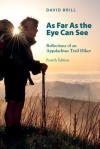 But for me, the science is secondary to another kind of message invoked by being in the presence of the fireflies. I’m reminded of a passage from one of my favorite writers, David Brill, from his book As Far As the Eye Can See, that describes two kinds of AT thru-hikers. The peak-baggers “viewed completing the Appalachian Trail as a Spartan feat that would enhance their sense of machismo without reconfiguring their attitudes or values.” But the other camp were “those intent on savoring the trail experience… They tended to measure the miles in terms of quality—of events and experiences—rather than quantity. These were the hikers who… learned and grew the most while on the trail.”
But for me, the science is secondary to another kind of message invoked by being in the presence of the fireflies. I’m reminded of a passage from one of my favorite writers, David Brill, from his book As Far As the Eye Can See, that describes two kinds of AT thru-hikers. The peak-baggers “viewed completing the Appalachian Trail as a Spartan feat that would enhance their sense of machismo without reconfiguring their attitudes or values.” But the other camp were “those intent on savoring the trail experience… They tended to measure the miles in terms of quality—of events and experiences—rather than quantity. These were the hikers who… learned and grew the most while on the trail.”
The scientists of future generations will probably speak of our time in history as the era when homo sapiens became so disconnected from nature that we romanticized and objectified it as something totally different and apart from ourselves. More than 80 percent of the world’s 7.5 billion people now live in urban areas and experience the natural world mostly through artificial constructs like educational television series and movies (like Avatar) about humans having adventures in forests and jungles, and on rivers and oceans. Rather than surviving sustainably on the landscape for 70,000 years like our cave-dwelling Neanderthal predecessors, we have industrialized, digitized and cyber-sized ourselves out of balance with what is left of our wild spaces in just a few centuries!
Yet there is at least one place where modern humankind still has an opportunity to coexist with nature. In the U.S. alone, our 58 national parks and more than 10,000 state parks provide us with some of the last refuges in which to create a harmonious balance with the plants and animals of planet Earth. Visitors to the 520,000-acre haven of wilderness in the Smokies and the 2,058 acres of Rocky Fork State Park alike represent some of the few human beings who still seek to physically connect with nature in some tangible and meaningful way.
The trick of the firefly light is a complex topic about which many books and papers have been written. But the light also communicates something intangible that cannot be explained by measurements and algorithms. My feeling when in their presence is that the fireflies represent an ecosystem that still has some semblance of balance, even though we have likely reached the tipping point beyond which humans can no longer live in harmony with nature.
It’s a language beyond words, but if I had to give it some, I’d pick: hope, mystery, love and acceptance that transcends death and the millennia.

Synchronous Fireflies in Elkmont, Great Smoky Mountains National Park, by Radim Schreiber. See more images at fireflyexperience.org.
~~~
Irony rarely escapes me either.
Much has changed since last spring. Because we shared last year’s findings with Tim and Jesse, thousands of park visitors are also excited to come and see the species in action. Thus our own viewings of Phausis reticulata and Photinus carolinus in the park two miles from our home have been drastically curtailed. Rocky Fork State Park closes at dusk, and so unless we were lucky enough to score a ticket to a park-sanctioned firefly-viewing event in the five minutes during which they sold out on June 1, we cannot regularly visit our flashy floating friends this season.
But our concern remains that the habitat of these and many other fragile species may be in peril, and that those who love the diversity of Rocky Fork as we do might not get the chance to learn about the state’s plans for the park until it is too late to have a voice in the matter. Our greatest fear is that well-meaning politicians seeking the boon of economic development for our community would inadvertently destroy much of what makes this fledgling new park unique. If its beautiful entry corridor and parkland can remain pristine with only primitive camping and no large-scale development, with vision and foresight from local leaders, Rocky Fork has what it takes to attract a huge piece of the global tourism market: ecotourists, who are willing to pay up to three times more for the quality that comes from a rustic, biodiverse park experience.
While we wait for officials in Nashville to let us and other friends of the park in on whatever plans they have in store, we hope our discovery may be somehow fortuitous. If our sharing of the news of these species means that “the prettiest mile of road in Tennessee,” can be spared the ravages of huge construction equipment and that a large visitor center might now not be destined for the woods and field that host the hatching and mating grounds of the Synchronous Fireflies and their Blue Ghost neighbors, then all will be well that ends well.
We will be the lightning bug viewers who valued the quality of our experiences rather than the quantity—and used the light of the fireflies to see our way to save them, at least for a little while.
Tags: Blue Ghost Fireflies, Fireflies, Frances Figart, Phausis reticulata, Photinus carolinus, Rocky Fork State Park, Rocky Fork Watershed, Synchronous Fireflies
 My Uncle Jack, my dad’s youngest brother, was my hero. Born November 9, 1940, he died today, September 29, 2020, just a few weeks shy of his 80th birthday.
My Uncle Jack, my dad’s youngest brother, was my hero. Born November 9, 1940, he died today, September 29, 2020, just a few weeks shy of his 80th birthday. Jack’s favorite connector word in his dialog was, “Anyway…” He said it liltingly, with the first syllable up high, and the others down low about an octave. Those who know him heard it a hundred times during a conversation. It reminds me of my grandmother, Jack’s mother, who had a wonderful Pennsylvania Dutch accent.
Jack’s favorite connector word in his dialog was, “Anyway…” He said it liltingly, with the first syllable up high, and the others down low about an octave. Those who know him heard it a hundred times during a conversation. It reminds me of my grandmother, Jack’s mother, who had a wonderful Pennsylvania Dutch accent.
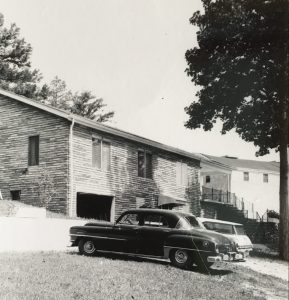
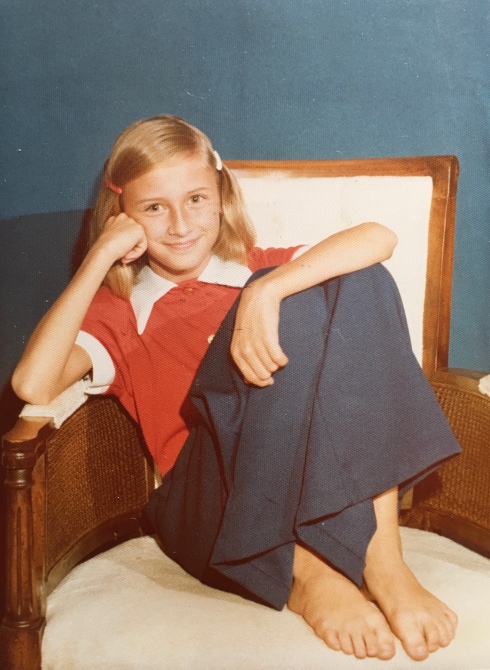







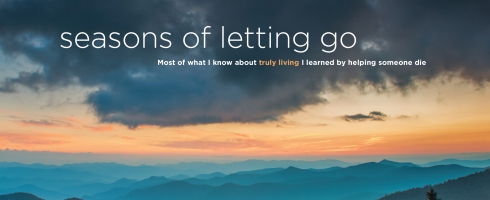
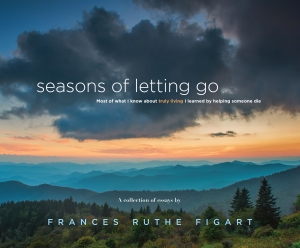









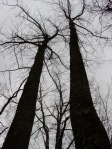















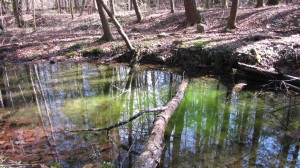



















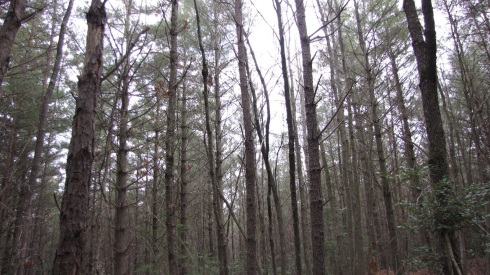















Recent Comments